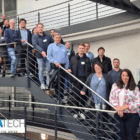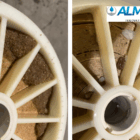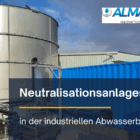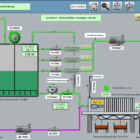Membrane degassing is a highly specialized process for removing dissolved gases such as oxygen, carbon dioxide or nitrogen from water and other liquids. This process is used in numerous industrial applications where dissolved gases can cause problems, for example in boiler water treatment, the production of ultrapure water, the food and beverage industry and in semiconductor manufacturing.
Membrane degassing offers significant advantages over traditional degassing methods such as thermal degassers or chemical additives, including high efficiency, low operating costs and a compact design.
Table of contents
Functional principle of membrane degassing
Membrane degassing is based on the use of hydrophobic membranes that act as selective barriers. These membranes allow the passage of gases but retain water and other liquids. The process works according to the following steps:
Liquid supply: The water to be treated or the process liquid is fed through a membrane module.
Contact with the membrane: Dissolved gases diffuse through the hydrophobic membrane due to a partial pressure gradient.
Removal of the gases: A vacuum is applied to the other side of the membrane or a purge gas (e.g. nitrogen) is used to suck out the dissolved gases.
Return of the liquid: The degassed water is made available for further use.
Typical applications of membrane degassing
1. boiler water treatment
Challenge: Oxygen in the boiler water leads to corrosion of metallic components.
Solution: Membrane degassing reduces the oxygen content to below 1 µg/l, which minimizes the use of chemical oxygen binders.
2. ultrapure water production
Challenge: Carbon dioxide in the feed water increases the conductivity and impairs the efficiency of ion exchangers or reverse osmosis systems.
Solution: Removing CO₂ by means of membrane degassing significantly improves the water quality.
3. food and beverage industry
Challenge: Dissolved oxygen impairs the shelf life and quality of beverages such as beer or juice.
Solution: Membrane degassing ensures efficient oxygen removal without the use of chemicals.
4. semiconductor and electronics production
Challenge: Dissolved gases can cause flaws or defects in the production of semiconductors.
Solution: Membrane degassing ensures the ultra-pure water quality required in this industry.
5. chemical processes
Challenge: Dissolved gases influence the reaction kinetics and can lead to undesirable side reactions.
Solution: Membrane degassing optimizes chemical processes by removing oxygen or carbon dioxide.
Structure and materials of the membrane modules
1. membrane materials
Polytetrafluoroethylene (PTFE): Outstanding chemical resistance and hydrophobic properties.
Polypropylene (PP): Cost-effective and widely used in industrial applications.
Polyvinylidene fluoride (PVDF): High thermal stability and mechanical strength.
2. module designs
Hollow fiber modules: Offer a large membrane surface area per unit volume and are particularly compact.
Flat membrane modules: Easy to clean and ideal for applications with high purity requirements.
Advantages of membrane degassing
High efficiency: Reduces dissolved gas content to extremely low concentrations.
Compact design: Requires less space compared to traditional degassers.
Environmentally friendly: no chemical additives for gas removal.
Flexibility: Suitable for a wide range of liquids and applications.
Low energy consumption: Especially compared to thermal processes.
Conclusion
Membrane degassing is a highly efficient and versatile technology for the removal of dissolved gases in various industrial applications. With the right materials, an adapted system design and continuous maintenance, optimum results can be achieved.
For further information on our products, please feel free to contact us at any time!








